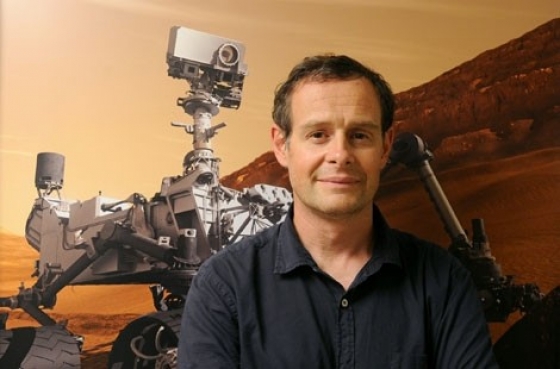 Mars: French equipment on Curiosity
Mars: French equipment on Curiosity NASA analyses Martian soil with French equipment
For four years, the rover "Curiosity" has been travelling on Mars looking for proof of life and rare metals. A laser camera and a miniature analysis laboratory fully or partly developed by French teams are on board.
The Martian
On the 6th of August 2012 the Mars Science Laboratory (MSL) mission landed on the red planet with a cutting-edge mobile laboratory on board: the rover "Curiosity". Since then, the rover has been travelling tirelessly on the Martian grounds and has already over 13 km. Late March 2016, "Curiosity" has started the crossing of the Naukluft plateau. The objective is to study the rock formations located on the other side of this 400 m wide area. To achieve this, the MSL mission can count on several French technologies. Two out of ten instruments embarked on the exploration rover have been designed in whole or part by France.
Cutting-edge tools
The ChemCam, installed on top of the mast of "Curiosity", is a sort of head for the robot. The camera is equipped with a laser and spectrometer (instruments that allow to measure the spectre of light) and is the result of the work of a team from the Irap, the Institute of Research in Astrophysics and Planetology in Toulouse, led by astrophysicist Sylvestre Maurice.
 The camera helps analysing the chemical structure of the Martian soil. Rocks are heated to 10,000 °C by laser while the camera captures the light that radiates during vaporisation. By analysing the nature of the light radiation created by the pulverisation of rocks, the ChemCam is able to deduce which atoms created the rocks.
The camera helps analysing the chemical structure of the Martian soil. Rocks are heated to 10,000 °C by laser while the camera captures the light that radiates during vaporisation. By analysing the nature of the light radiation created by the pulverisation of rocks, the ChemCam is able to deduce which atoms created the rocks.
In the body of "Curiosity", the Sample Analysis at Mars (SAM) case serves as a mini-laboratory. Its role is to detect proofs of life on the red planet. When rocks that may contain remains of former lifeforms are detected by the ChemCam, samples are placed in the SAM which analyses them to look for organic molecules. The means and the system used to proceed with the analysis have also been developed by Frenchmen, a team from the University Pierre-et-Marie-Curie led by Pr. Michel Cabane.
A fruitful collaboration between the French and the Americans
Since 2012, the ChemCam has made 300,000 laser shots, which allowed to study over a thousand different rocks. Sylvestre Maurice savours this historical success: "This is the first time that France designs an instrument to go to Mars. Today, our laser camera is the most frequently used instrument on 'Curiosity'", he said to newspaper La Dépèche in January 2016. The engineer and his team at the Irap have been piloting the ChemCam for four years and are the first non-Americans to participate in the lead of a NASA mission.
The partnership has been renewed: the Irap and Sylvestre Maurice have been asked to send the successor of "Curiosity" to Mars in 2020. It will be equipped with a SuperCam, an improved version of the ChemCam. Its demo model should be sent from Toulouse to the USA in late 2016. Its new features include colour imaging and more accurate spectrometers able to analyse the very nature of the bonds between atoms present in the rocks. Final integration to the rover equipment is expected to take place in 2018.
Banner: © Nasa
Article body: © DR